Q
Is Hyundai Sonata a family car?
Yes, Hyundai Sonata can be regarded as a family car. In terms of space, it has a relatively spacious interior. Whether it's the 2020 model with a length of 4,900mm or the 2017 model with a length of 4,855mm, the wheelbase is over 2,800mm, which can provide comfortable headroom and legroom for passengers. And the 510L trunk volume is sufficient to meet the needs of a family's daily shopping and loading items for trips. In terms of safety configuration, it comes standard with ABS anti - lock braking system, electronic stability control, multiple airbags, and ISO FIX child seat interfaces, which safeguard the family members during trips. In terms of power, it is mainly powered by 2.0L and 2.5L gasoline engines, with a smooth power output that can meet the driving requirements of daily commuting and weekend outings. In addition, the vehicle comes with a 5 - year or 300,000 - kilometer warranty, which reduces the family's concerns about later - stage vehicle use.
Special Disclaimer: This content is published by users and does not represent the views or position of PCauto.
Related Q&A
Q
What is the life expectancy of Hyundai Sonata Hybrid?
The service life of the Hyundai Sonata Hybrid can vary depending on multiple factors. Generally speaking, the battery of the Sonata Hybrid usually lasts about 5 years. As for other components, Hyundai offers a 5 - year or 300,000 - kilometer warranty for the whole vehicle, which reflects the expected durability of the vehicle under normal use conditions. The warranty periods for some core components, such as the power battery assembly, drive motor assembly, motor controller assembly, and vehicle controller assembly, are even longer, sometimes up to 8 years or 150,000 kilometers. Regular maintenance, good driving habits, and usage conditions all play important roles. If properly maintained, serviced on time, and driven carefully, this car has the potential to serve you for over 10 years and cover a mileage of as much as 200,000 kilometers or more.
Q
Which model of Hyundai Sonata is the most expensive ?
Currently, the most expensive model of Hyundai Sonata in Malaysia is the Sonata N-Line version, with an official price of approximately RM218,888 (excluding insurance). This high-performance version is equipped with a 2.5L Turbo GDi four-cylinder engine, capable of outputting 290 horsepower and 422 Nm of torque. Paired with an 8-speed wet dual-clutch transmission and front-wheel drive, it can accelerate from 0 - 100 km/h in just 6.2 seconds.
Compared with the standard Sonata (equipped with a 1.6L Turbo or 2.0L naturally aspirated engine), in addition to its powerful performance, the N-Line is equipped with a sport-tuned suspension, 19-inch wheels, an exclusive N Line exterior kit (including a more aggressive aerodynamic design and quad exhaust pipes), and an all-black interior with red stitching, giving it an overall sporty coupe style.
Although it's price is high, the N-Line version offers a comprehensive configurations, including the advanced Hyundai SmartSense active safety system (such as SCC Smart Cruise Control and FCA Forward Collision Warning), a panoramic sunroof, and a Bose sound system. It's a great choice for consumers who seek both performance and luxury.
Q
How about the speed performance of Hyundai Sonata?
The speed performance varies among different models of the Sonata. The top speed of the 2020 Hyundai Sonata 2.5 Premium can reach 210 km/h, while the top speeds of the 2017 Hyundai Sonata 2.0 Elegance and Hyundai Sonata 2.0 Executive are 200 km/h. These figures reflect the vehicle's potential in terms of power performance. However, in actual driving, it's difficult to reach the vehicle's top speed due to factors such as road conditions, traffic regulations, and driving behavior. For example, the speed limits on ordinary city roads are usually quite low. Although the speed limits on highways are relatively higher, it's not allowed to speed at will. It is recommended that everyone abide by the regulations while driving, reasonably control the speed according to the actual situation, and ensure driving safety.
Q
What's the engine displacement of Hyundai Sonata?
Different models of Sonata have various engine displacements. For example, the 2020 Hyundai Sonata 2.5 Premium is equipped with an engine with a displacement of 2497cc, which can provide ample power to meet the needs of daily driving and some driving scenarios with power requirements. As for the 2017 Hyundai Sonata 2.0 Elegance and Hyundai Sonata 2.0 Executive, their engines have a displacement of 1999cc. Relatively speaking, they may perform better in terms of fuel economy and can also provide stable power output for the vehicle. Engines with different displacements each have their own characteristics. Consumers can choose the model that suits them according to their own driving habits, such as the demand for power and considerations regarding fuel consumption.
Q
What's the service life of Hyundai Sonata's spark plugs?
The service life of the Hyundai Sonata's spark plugs depends on their types. The more affordable nickel alloy spark plugs typically last about 20,000 - 30,000 kilometers. Platinum spark plugs, with better heat and corrosion resistance, can be used for 60,000 - 80,000 kilometers. Iridium spark plugs, known for their high ignition performance, usually have a service life of 80,000 - 100,000 kilometers or even longer.
However, other factors can also have an impact. If the vehicle often drives under harsh conditions such as extreme temperatures, high humidity, and dusty areas, or experiences frequent starting and stopping, the spark plugs may wear out more quickly. Aggressive driving habits like rapid acceleration and hard braking can also increase the engine load and accelerate the aging of the spark plugs. Therefore, although the above are general reference standards, it's very important to regularly check the condition of the spark plugs and follow the vehicle maintenance manual for optimal performance.
Q
Does Hyundai Sonata have spark plug wires?
Yes, Hyundai Sonata is equipped with spark plugs, but it doesn't have the traditional externally exposed spark plug wires. Spark plugs are crucial components in the engine's ignition system, as they generate electric sparks to ignite the air - fuel mixture in the engine's combustion chamber, enabling the engine to operate properly.
With the development of modern automotive technology, many vehicles, including the Hyundai Sonata, have adopted the Distributorless Ignition System (DIS) or the Direct Ignition System (DI). In these systems, the ignition coils are directly installed on top of the spark plugs, providing high - voltage electricity directly to the spark plugs. They no longer rely on the traditional long spark plug wires to transmit high - voltage electricity.
This design reduces electromagnetic interference, improves ignition efficiency and engine performance, and also decreases the likelihood of spark plug wire failures, such as electrical leakage and aging. At the same time, it enhances the overall reliability of the vehicle and its fuel economy.
Q
How many cylinders does Hyundai Sonata have?
Whether it's the regular version or the N-Line version, the Sonata features a 4-cylinder (inline-four) engine layout, which is also a common engine configuration for mainstream mid-size sedans these days. This setup can not only deliver decent power output but also balance it with fuel efficiency. Hyundai has invested lot in developing turbocharged engine technology in recent years. For example, the SmartStream series of engines has optimized combustion efficiency and reduced emissions, enabling the four-cylinder engine to achieve performance comparable to that of a six-cylinder engine. If car owners prefer more potent power, they might need to consider higher-end rear-wheel-drive or all-wheel-drive performance cars. However, for general family use or mild sporty driving needs, the 1.6T or 2.5T four-cylinder engines are good enough for daily driving and highway cruising.
Q
How much does it cost to change Hyundai Sonata's spark plugs ?
The cost of replacing the spark plugs of Hyundai Sonata ranges from approximately RM200 to RM500, depending on the model year, engine type (1.6T or 2.5T), and the brand of spark plugs used (such as NGK, Denso, or original factory parts). A standard 1.6L Turbo engine usually uses iridium or platinum spark plugs, which cost around RM50 to RM150 each. On the other hand, the 2.5L Turbo engine (N - Line version) may require higher - performance spark plugs, which are slightly more expensive (around RM80 to RM200 each).
In addition, labor costs typically range from RM80 to RM150. Dealerships may charge more, providing factory - certified parts. Third - party repair shops offer lower prices, but you need to make sure the technicians perform well in the operation.
The spark plug replacement interval for the Hyundai Sonata is generally between 60,000 and 100,000 kilometers. However, if your vehicle experiences vibrations, has difficulty starting in cold weather, or shows an increase in fuel consumption, you may need to check the spark plugs earlier. It's recommended that owners have technicians inspect the spark plugs during regular maintenance and choose high - quality spark plugs that can withstand high temperatures and resist carbon deposits to ensure optimal engine combustion efficiency.
Q
How many spark plugs does Hyundai Sonata have?
Hyundai Sonata usually has four spark plugs. This is because most Sonata models are equipped with four-cylinder engines, and in gasoline engines, each cylinder is typically assigned one spark plug. Spark plugs play a crucial role in the operation of the engine. They are responsible for igniting the air-fuel mixture in the cylinders, enabling the engine to generate power. For example, the 2020 Hyundai Sonata 2.5 Premium and the 2017 Hyundai Sonata 2.0 Elegance/Executive models are both equipped with four-cylinder engines, and these models all have four spark plugs. Regularly inspecting and timely replacing the spark plugs according to the vehicle's maintenance schedule helps ensure smooth engine operation, good fuel efficiency, and reliable vehicle performance.
Q
How often should I change the spark plugs in my Hyundai Sonata?
The frequency of replacing the spark plugs in your Hyundai Sonata depends on the type of spark plugs installed. Nickel alloy spark plugs are affordable, but they have a short service life. You should consider replacing spark plugs when the vehicle has traveled about 20,000 - 30,000 kilometers. Platinum spark plugs are known for their good heat resistance and corrosion resistance and can be used for 60,000 - 80,000 kilometers. Iridium spark plugs have high ignition performance, and their service life is generally 80,000 - 100,000 kilometers or even longer.
In addition, the operating conditions of the vehicle also affects the service life of spark plugs. If you often drive in harsh environments such as extreme heat, humidity, and dust, or frequently start and stop the vehicle, or have a habit of aggressive driving, the spark plugs may wear out fast, and you may need to replace them early. Regularly refer to the vehicle's owner's manual, as it may provide more specific guidance for your Sonata model.
Latest Q&A
Q
What is the fuel consumption of GLC 2024?
The 2024 Mercedes-Benz GLC performs excellently in fuel economy. The specific fuel consumption data varies depending on the model and drivetrain. The fuel consumption of the GLC 200 is approximately 6.0-6.5 liters per 100 kilometers, while that of the GLC 300 is around 6.5-7.0 liters per 100 kilometers. The actual fuel consumption may vary due to factors such as driving habits, road conditions, and vehicle load.
The 2024 GLC is equipped with an efficient 2.0-liter turbocharged engine and a 48V mild - hybrid system, which further optimizes fuel efficiency and provides smooth power output. For Malaysian consumers, the fuel consumption performance of the GLC is very suitable for both city commuting and long-distance driving. Especially when fuel prices fluctuate greatly, its energy-saving performance is particularly important.
In addition, regular maintenance and proper use of driving modes (such as the Eco mode) can also help reduce fuel consumption. It is recommended that owners refer to the official manual to achieve the best fuel economy. If you have higher requirements for fuel consumption, you can also consider the plug-in hybrid version of the GLC, which can further reduce fuel consumption in pure-electric mode.
Q
How many miles can a GLC 2024 go on a full tank?
According to the official data of the 2024 Mercedes-Benz GLC, its fuel tank capacity is approximately 60 liters. The specific cruising range depends on driving habits and road conditions. Under combined driving conditions, it can travel about 600 to 700 kilometers, which is equivalent to about 373 to 435 miles. This vehicle is equipped with an efficient turbocharged engine and advanced energy - saving technologies, such as a 48V mild-hybrid system, which helps to optimize fuel economy and is particularly suitable for the mixed urban and highway driving conditions in Malaysia.
If you want to further extend the cruising range, you can pay attention to smooth acceleration, reduce sudden braking, and regularly maintain the vehicle, such as keeping the tire pressure normal and replacing the air filter in time. In addition, the 2024 Mercedes-Benz GLC also offers a variety of driving modes, such as the Eco mode, which can help reduce fuel consumption and is suitable for long-distance driving or congested roads. For users in Malaysia, the cruising performance of this car can fully meet the needs of daily commuting and weekend outings, while also combining luxury and practicality.
Q
Is GLC 2024 a safe car?
The 2024 Mercedes-Benz GLC performs excellently in terms of safety. It is equipped with a number of advanced safety technologies, including active brake assist, lane-keeping assist, blind-spot monitoring, and adaptive cruise control. These features can effectively reduce the risk of accidents and enhance driving safety. In addition, the 2024 GLC also adopts a high-strength body structure and multiple airbags, further enhancing its collision protection capabilities.
For consumers in Malaysia, this car is also adapted to local road conditions, such as the hot and rainy climate. Its chassis tuning and electronic stability system have also been optimized to ensure a stable driving experience on various road conditions.
If you are particularly concerned about the safety performance of cars, you can also learn about the safety configurations of similar models from other brands, such as the Volvo XC60 or the BMW X3. They also perform well in terms of safety.
Overall, the 2024 GLC is a reliable and safe vehicle, suitable for Malaysian family users who value safety and comfort.
Q
What is the maintenance cost of Mercedes GLC 2024?
The maintenance cost of the 2024 Mercedes-Benz GLC in Malaysia depends on the model (such as GLC 200, GLC 300, or AMG versions) and the selected maintenance package. It's generally recommended to perform basic maintenance every 10,000 kilometers or 12 months. The cost of basic maintenance is approximately between RM1,500 and RM2,500, which includes oil and filter changes and basic inspections. For major maintenance (such as at 40,000 or 60,000 kilometers), the cost may reach RM4,000 to RM6,000, involving the replacement of transmission fluid, brake fluid, etc.
In addition, the "Service Package" provided by Mercedes-Benz can be pre-purchased, which can save about 10% - 15% of long-term maintenance expenses. In Malaysia, the maintenance cost of luxury cars is generally high, but Mercedes-Benz has an extensive after-sales service network covering major cities like Kuala Lumpur and Penang, ensuring that car owners can get professional support.
It's worth noting that the replacement costs of vulnerable parts such as tires and brake pads are not included in the above costs. It is recommended that car owners conduct regular inspections to extend the service life of the parts. If you choose a third-party repair shop, the cost may be lower, but make sure they use original-certified parts to avoid warranty disputes. The maintenance cost of the Mercedes-Benz GLC is in line with its high-end positioning, but good maintenance habits can effectively reduce the long-term cost of car use.
Q
How to connect phone to Haval H2 2019?
To connect your phone to the 2019 Haval H2, first make sure the vehicle's infotainment system is turned on. Then, you can connect via a USB cable or Bluetooth. If you use a USB cable, plug your phone into the USB port on the center console. The system will automatically recognize it and prompt you to complete the connection. Some models may require you to enable the USB debugging mode on your phone.
If you're using Bluetooth, go to the "Settings" menu in the in - car system, select "Bluetooth" and turn on the search function. At the same time, turn on Bluetooth on your phone and select "Haval H2" to pair. Once the pairing is successful, you can use the call and music playback functions. It should be noted that there may be slight compatibility differences among different phone models. It is recommended to use the original data cable for optimal stability.
In addition, the in - car system of the Haval H2 also supports the mirror projection function of some phones, such as Android Auto or CarPlay. You can achieve navigation and more app operations by downloading the corresponding apps, which provides convenience for driving.
In the hot climate of Malaysia, it is recommended to regularly check the heat dissipation of in - car electronic devices to avoid performance degradation caused by long - term high - temperature operation. Also, keep the system software updated to get the latest function optimizations.
View MoreRelated News

Hyundai's Big Return to Malaysia: Top 5 Models Expected
MichaelMay 30, 2025
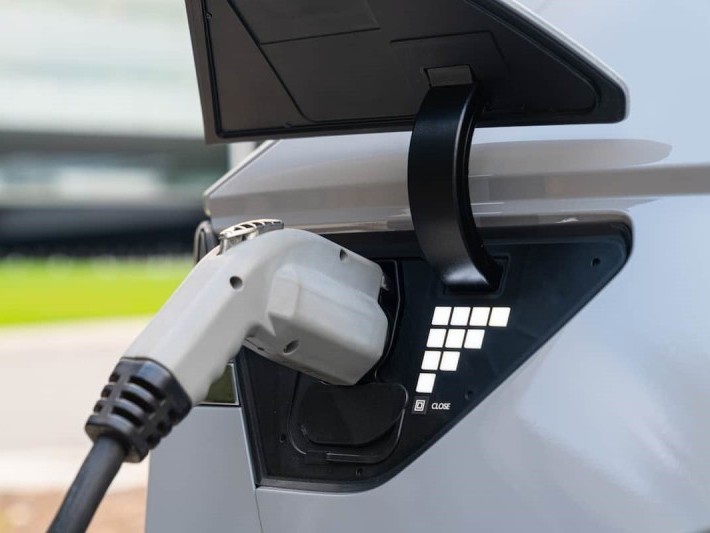
580,000 km & 87.7% Battery Health: Ioniq 5’s Incredible Durability
MichaelMay 6, 2025

Revolutionizing Hybrids: Hyundai’s New System vs. Toyota's Hybrid System
Kevin WongApr 22, 2025
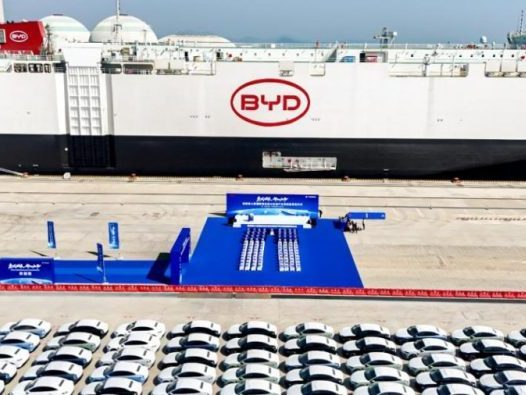
BYD Sets Global Sales Target of 5.5 Million Units for 2025
RobertMar 26, 2025
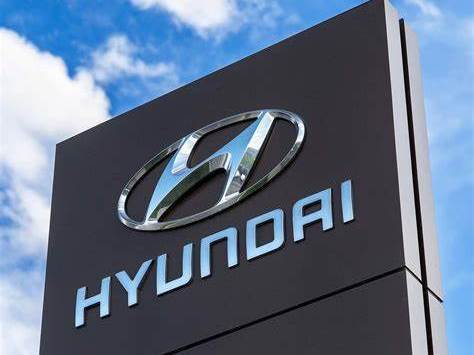
Hyundai is to launch an all-solid-state EV battery production line, but who's leading?
MichaelFeb 12, 2025
View More





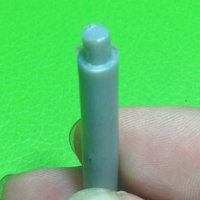





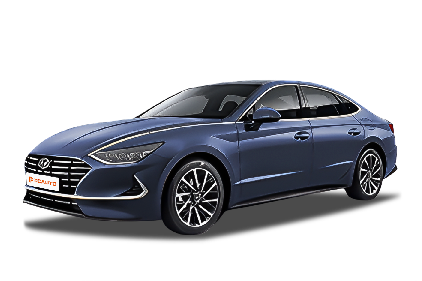





Pros
Cons